| Home | Nature Weekly Index |
27 September 2020 | Egg-laying Zhejiang Tussock Moth | Dasychira chekiangensis |
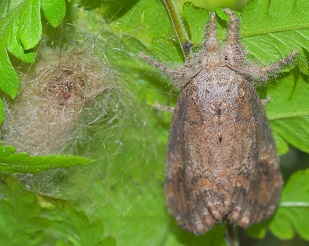
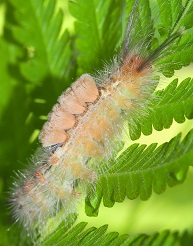 I am back again after a 2-month break.
I am back again after a 2-month break.
This was the second egg-laying moth that I had seen. The first sighting was in January this year in a park. The current one was found on my potted plant along the balcony area more recently on 13 July.
It all started with the sighting of a large Tussock Moth caterpillar on a potted Common Acacia (Acacia auriculiformis) at the end of June. I did not pay too much attention to it since Tussock Moth caterpillar was quite commonly seen. The caterpillar then went missing for a few days before it re-appeared on 3 July at the underside of a leaf (frond) of a fern, Cyclosorus opulentus. The next morning, to my surprise, it was spinning a cocoon under the leaf. The entire work was completed around noon.
Eight days went by and finally, the new moth emerged from the nested cocoon in the morning of 12 July. Unfortunately, I missed out the emergence process. By the time I saw the moth, it was already by the side of the cocoon. It remained at the same position for the entire day till the next morning. Then came surprise number two, it started laying eggs! That was a really short life cycle after just emerging from the cocoon the day before. The egg-laying activity continued the whole day. When I last inspected it around 10 PM, it was still producing eggs. The next morning, the moth was gone. A single layer of eggs had carpeted a small area of the underside of the frond. I counted 742 eggs in total with the help of the magnified photos.
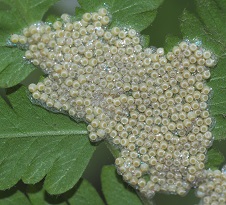
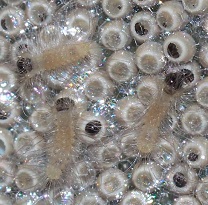
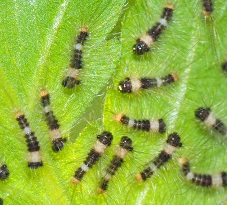
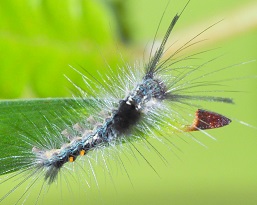
This Tussock Moth should be from the subfamily Lymantriinae, under the family Erebidae. At first, I thought that it might be an Orgyia species. However, this was ruled out since females from this genus are flightless with only rudimentary wings. Further search led me to Dasychira chekiangensis (Zhejiang Tussock Moth). In the iNaturalist website, there were 877 sightings reported with 13 of them from Singapore when I last visited the website on 25 September.
The fern where the caterpillar spin the cocoon and where the moth laid its eggs later was shielded by a thick layer of Blue Pea Vine (Clitoria ternatea) that blanketed part of the balcony area. The Blue Pea Vine had climbed up the Common Acacia that grew out of the balcony area. The leaves of the Common Acacia were likely to be the food source for the original lone Tussock Moth caterpillar.
The eggs started to hatch in the night of 19 July. The duration between the egg-laying and egg-hatching was just 6 days. The tiny caterpillars gathered around the remaining egg shells and consumed them. Within a day, they were all dispersed, going their own way to search for food. The last caterpillar from the batch that I saw was an 8-day old specimen on the Common Acacia.
Last week, I trimmed the Common Acacia and Blue Pea Vine. Both are pretty hardy plants and will regain their past days’ glory in no time. There was no sign of any caterpillar.